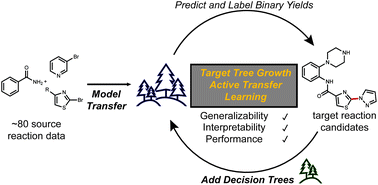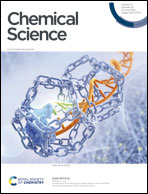Predicting reaction conditions from limited data through active transfer learning†
Abstract
Transfer and active learning have the potential to accelerate the development of new chemical reactions, using prior data and new experiments to inform models that adapt to the target area of interest. This article shows how specifically tuned machine learning models, based on random forest classifiers, can expand the applicability of Pd-catalyzed cross-coupling reactions to types of nucleophiles unknown to the model. First, model transfer is shown to be effective when reaction mechanisms and substrates are closely related, even when models are trained on relatively small numbers of data points. Then, a model simplification scheme is tested and found to provide comparative predictivity on reactions of new nucleophiles that include unseen reagent combinations. Lastly, for a challenging target where model transfer only provides a modest benefit over random selection, an active transfer learning strategy is introduced to improve model predictions. Simple models, composed of a small number of decision trees with limited depths, are crucial for securing generalizability, interpretability, and performance of active transfer learning.

- This article is part of the themed collection: Most popular 2022 physical and theoretical chemistry articles


 Please wait while we load your content...
Please wait while we load your content...